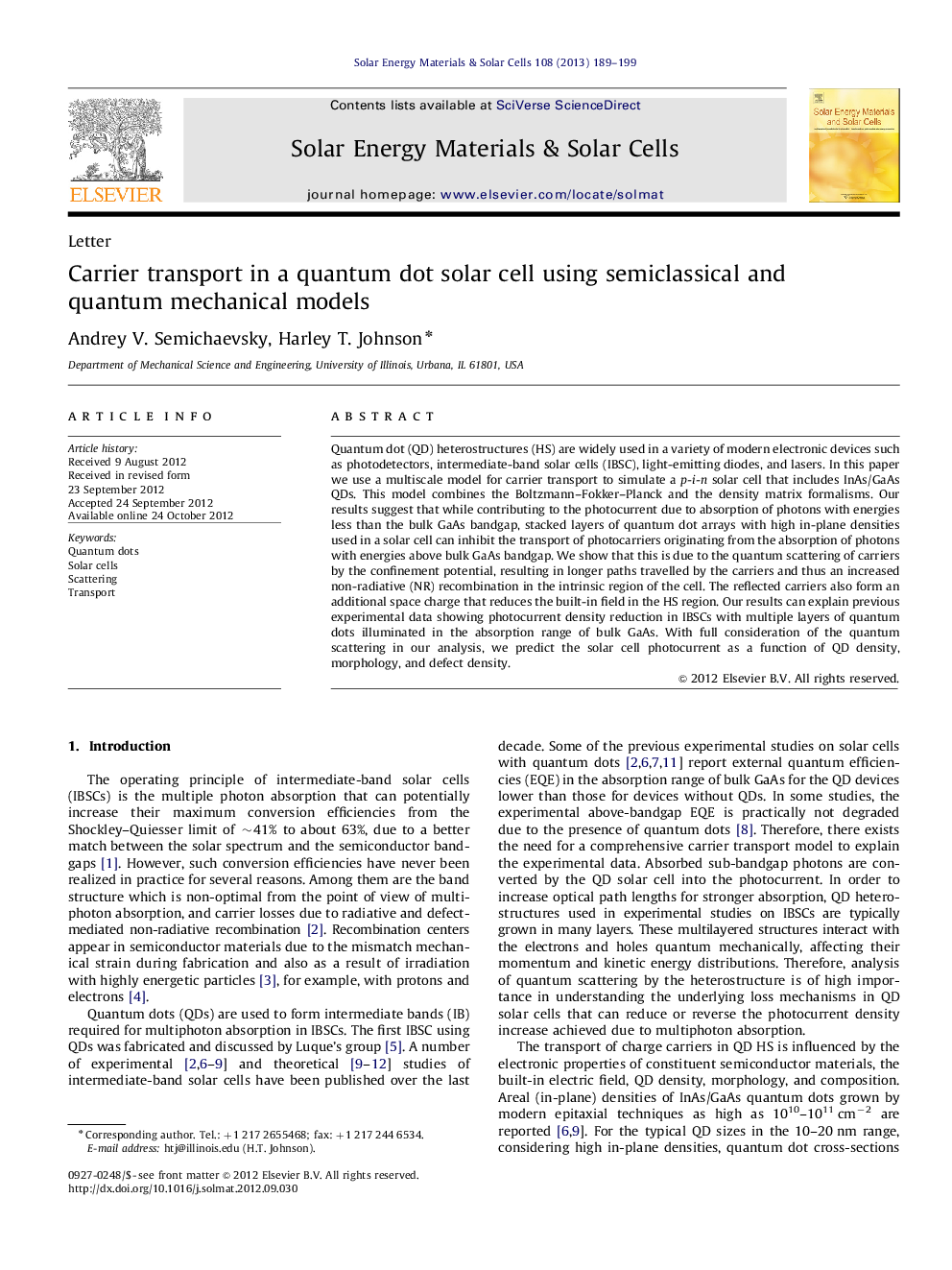| Article ID | Journal | Published Year | Pages | File Type |
|---|---|---|---|---|
| 78696 | Solar Energy Materials and Solar Cells | 2013 | 11 Pages |
Quantum dot (QD) heterostructures (HS) are widely used in a variety of modern electronic devices such as photodetectors, intermediate-band solar cells (IBSC), light-emitting diodes, and lasers. In this paper we use a multiscale model for carrier transport to simulate a p-i-n solar cell that includes InAs/GaAs QDs. This model combines the Boltzmann–Fokker–Planck and the density matrix formalisms. Our results suggest that while contributing to the photocurrent due to absorption of photons with energies less than the bulk GaAs bandgap, stacked layers of quantum dot arrays with high in-plane densities used in a solar cell can inhibit the transport of photocarriers originating from the absorption of photons with energies above bulk GaAs bandgap. We show that this is due to the quantum scattering of carriers by the confinement potential, resulting in longer paths travelled by the carriers and thus an increased non-radiative (NR) recombination in the intrinsic region of the cell. The reflected carriers also form an additional space charge that reduces the built-in field in the HS region. Our results can explain previous experimental data showing photocurrent density reduction in IBSCs with multiple layers of quantum dots illuminated in the absorption range of bulk GaAs. With full consideration of the quantum scattering in our analysis, we predict the solar cell photocurrent as a function of QD density, morphology, and defect density.
